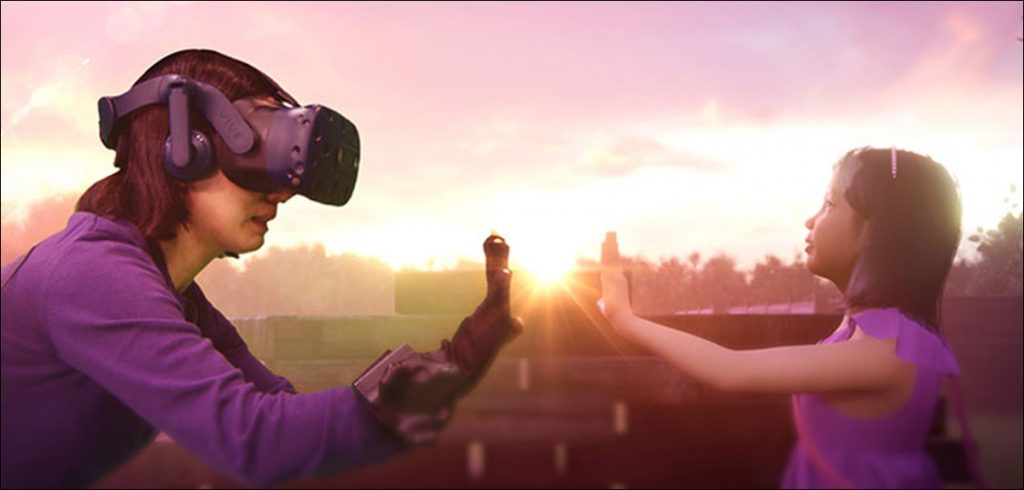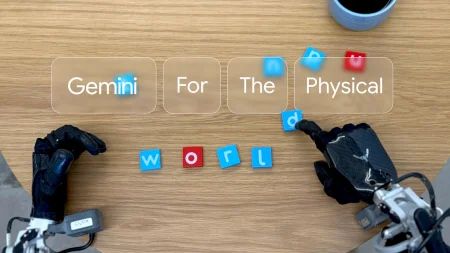While an AI avatar could be a great way to memorialize someone, it could also prevent people from completing the grieving process.
Artificial intelligence (AI) has come a long way, as have the industries that make money off death, as grisly as it sounds. And technopreneurs have managed to make space for themselves by blending the two in the form of grief tech and ghostbots. It’s officially the end of mourning as we know it.
For as long as humans have been around, we’ve fought against the inevitability of death. AI is finally intersecting with the highest and deepest human experience – death. Companies have been employing AI to virtually bring back the dead, a technology hailed as “grief tech,” to bring comfort to their loved ones and help them process their grief. But we have to ask ourselves the question – how much is too much?
Visual digital memorialization
In ultra-wired South Korea, producer Kim Jong-woo’s controversial 2020 documentary “I Met You” used VR to culminate into a tearful “reunion” between a mother and a virtual recreation of her daughter who’d passed away in 2016. Jong-woo’s idea was to help people remember their loved ones beyond photo technology. While some thought it to be “emotionally manipulative,” others felt it brought grieving loved ones some closure.

Taking generative AI to the ultimate, macabre conclusion is DeepBrain AI, a Seoul-founded company that provides a range of AI-powered customer service products. Its virtual human service Re;memory recreated the persona of late family members of clients, right down to their voice and physique. Basically, one can create avatars of themselves by reading a few lines in a studio, and their families can visit them at offsite facilities. The idea is to immortalize one’s life story via a virtual human.
Ghoulish, is it? Maybe not entirely. Re;memory’s idea stemmed from the beguiling traditional Korean mourning and death anniversary traditions of “Jesa”. It involves large family gatherings, considerable amounts of food and drink, and performing ancestral rituals. But now, Jesa rituals are evolving to include visiting the columbarium on death anniversaries to pay respects to their ancestors and spend more quality time with the family. Re;memory’s idea is not to replicate the personality but rather allow grieving family members to experience a digital avatar of a person on a day they miss them the most.

Grief chats in the digital era
Another form of AI going beyond the physical realm is in the form of audio-based AI. For instance, Zhejiang-based Chinese global AI giant Super Brain has created ‘griefbots’ for grieving family members. A mourning father hoping to talk to his deceased son gave founder Zhang Zewei the idea, who developed it into services ranging from limited audio/visual clips to entirely conversing video-enabled chatbots. How it works is that the software usually guides users through a personality questionnaire, thereby training its AI-backed algorithm based on the responses.
It’s the same story with James Vlahos and his company, HereAfter AI. When his father was diagnosed with Stage IV lung cancer, he created a “Dadbot,” an interactive experience that emulated his father using recordings of his father’s life story. Vlahos said he found comfort in doing so; we cannot disagree.
Even in the West, a crop of California-based startups like Séance AI, StoryFile, and Replika now offer users various services to help them cope with the loss of a loved one. Right from audio legacies to virtual avatars one can have interactive video conversations with, are the dead even really dead anymore?

The ethics surrounding a digital afterlife
Not surprisingly, the concept of living as an avatar in the cloud or the metaverse, like Elon Musk’s Neuralink project, has generated a lot of conversation – and controversy. After all, what do these Black Mirror-esque digital afterlives mean for the future of humanity?
Firstly, psychiatrists might argue that grief tech is a double-edged sword, as it might not be entirely healthy for the living. While an AI avatar could be a great way to memorialize someone, it could also prevent people from completing the grieving process. People could end up trying to avoid reality, and it could even hinder them from forming new and meaningful relationships.
Secondly, most AI companies haven’t intended grief tech to be something super long-term but instead aim at providing loved ones with a sense of closure. This is especially important in cases where sudden deaths have left bereaved relatives with a void, which perhaps an AI version of their loved one can fill. It could also help them cope and complete the grieving process in the unfortunate case of sudden death.

However, perhaps the most puzzling – and pertinent – question arising from this situation is – does one have the right not to be “resurrected” via such AI, notwithstanding their loved ones’ preferences? Will last wills and testaments now have to have consent/dissent clauses about the use of one’s biometric data to create ‘griefbots?’ Who owns the avatar after the person’s death? Interestingly, the same thing could and does happen to our tangible objects after our deaths – vintage markets with old, discarded family photographs, anyone?
So, it’s still not clear how consent obligations will be complied with, especially in such situations where living relatives are not only consenting to the usage of biometric data of their departed loved ones but even requesting AI companies to use it – for their own private benefit, of course.
With digital memorialization even making its way into the arts, it’s clear that we’ve just begun the conversation around grief tech. While resurrecting the dead in the form of AI does promise great benefits and could revolutionize the way we approach death, the attending risks of digital immortality are great – mostly because we might not really be prepared for it.
In case you missed:
- Head In the Cloud: Could You Upload Your Mind To The Metaverse?
- Keeping Your Tech Tidy: Tips For Data Backup And Safety
- Everything you need to know about DaaS (Desktop as a Service)
- Password Practices For A Safe Digital Presence
- Six ways hosted private cloud adds value to enterprise business
- Top Digital Transformation Trends For 2024
- Can we fight climate change with AI?
- How Blockchain Can Solve AI’s Trust Problem
- The Life of Pi Network – FAQs and Everything Else You Want To Know
- Crypto Heists: How To Keep Your Cryptocurrency Safe?









